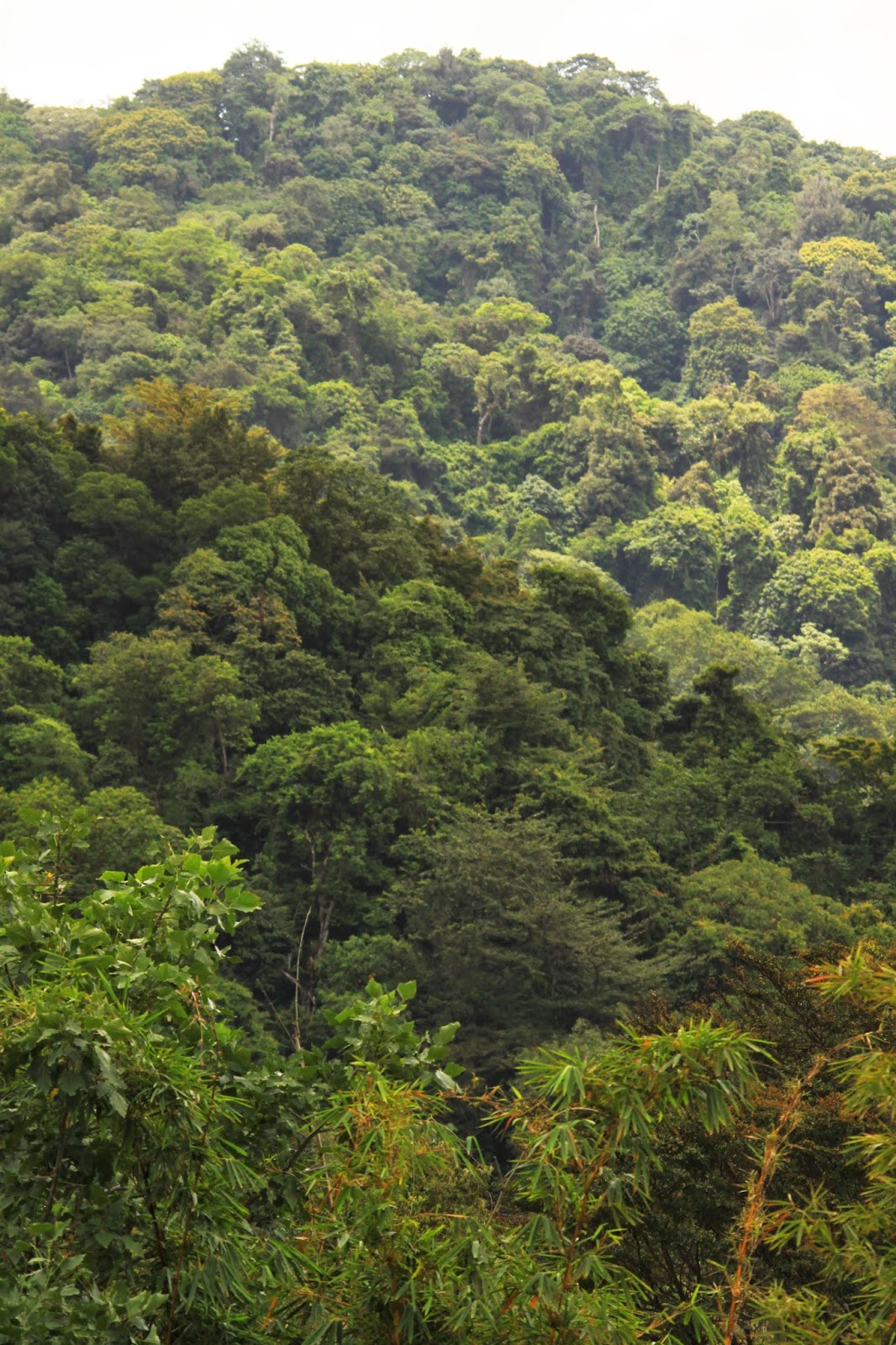(Northern range © Ian Loyd Reef and Rainforest Tours)
The centre has an exceptional biodiversity, with a species list for the area comprising 400 birds, 108 mammals, 55 reptiles, 25 amphibians and 617 butterflies. The first feature that greets you on arrival at the centre is the fantastic veranda which overlooks the forested valley and has an abundance of hummingbird and fruit feeders on view. The fruit feeders attract a great diversity of species including green and purple honeycreepers, bay-headed, silver-beaked and white-lined tanager, violaceous euphonia. Plus half a dozen hummingbird species are almost always on view too.
(Purple honeycreeper © Ian Loyd Reef and Rainforest Tours)
After dinner, I joined a night walk along the entrance track to search for smaller creatures of the night. Trinidad chevron tarantulas, common whip scorpion spiders, true scorpions and several stick insect species were all surprisingly abundant. I also saw variegated gecko, polka-dot tree frog, tropical flat snake, common cat-eyed snake and a spectacular South American common coral snake and juvenile cook's tree boa. I also found the endemic yellow-throated frog (Mannophryne trinitatis) its favoured habitat of small mossy streams.
(Trinidad Chevron tarantula © Ian Loyd Reef and Rainforest Tours)
(Trinidad Chevron tarantula © Ian Loyd Reef and Rainforest Tours)
(Polka dot tree frog © Ian Loyd Reef and Rainforest Tours)
(Tropical flat snake © Ian Loyd Reef and Rainforest Tours)
(Cat-eyed snake Leptodeira annulata © Ian Loyd Reef and Rainforest Tours)
(Variegated gecko Gonatodes ceciliae © Ian Loyd Reef and Rainforest Tours)
Birding the next morning I focussed on trying to find the tufted coquette which is not only incredibly beautiful but also has the title of being the second smallest bird in the world! A pair regular visit the flowering bushes below the veranda of the centre. After a short wait I managed a fantastic view of a male and more brief sighting of the female. This species is actually too small to feed from the artificial hummingbird feeders so you have to stake it out.
(Tufted coquette © Ian Loyd Reef and Rainforest Tours)
On a walk along one of the trails through the reserve I saw such species such as the recently split Guianan trogon, channel-billed toucan, lineated woodpecker, white-bearded and golden-headed manakin, bearded bellbird and bay-headed tanager.
(Golden-headed manakins © Ian Loyd Reef and Rainforest Tours)
My group also visited the Dunston Cave, (actually a gorge) home of the most accessible colony of oilbirds in the world. Oilbirds are the only nocturnal, fruit-eating birds in the world and use a combination of echolocation, a powerful sense of smell and super-sensitive vision to locate fruit bearing trees at night. We were very privileged to see these mysterious birds at their roost.
(Oilbird © Ian Loyd Reef and Rainforest Tours)
From Asa Wright we moved south to visit Tamana Bat Cave. The impressive cave systems on Tamana Hill are home to an estimated 500,000 to 3 million bats of 13 species. Entering the caves is a remarkable experience but even more spectacular is watching the emergence of thousands of the bats at dusk.
(Davy's naked backed bats © Ian Loyd Reef and Rainforest Tours)
(Trinidad funnel-eared bat © Ian Loyd Reef and Rainforest Tours)
While in central Trinidad we also paid a visit to Matura beach one night, to watch leatherback turtles laying their eggs. Matura beach is the second most important nesting site in Trinidad for leatherbacks. The rural village of Matura previously received most of its income from fishing and agriculture, but in recent years these industries have been in decline while turtle watching tourism has been on the rise. This has helped boost the income for the village but with increased visitor numbers it has also caused some problems with disturbance of the turtles. There are now regulations in place and an excellent team of local volunteer rangers to enforce them. Watching an enormous female leatherback (they can grow to be as large as a small mini) laying her eggs, and then creating a decoy nest for the predators to find in the morning was fascinating and will live in my memory forever.
(Leatherback turtle © Ian Loyd Reef and Rainforest Tours)
No trip to Trinidad would be complete without visiting Caroni swamp in the centre of the country. Here we watched hundreds of scarlet ibis coming to roost in the mangrove islands of the Caroni bird sanctuary. I was equally as excited about the impressive Cook's tree boa we found saw coiled up above our heads.
(Scarlet ibis © Ian Loyd Reef and Rainforest Tours)
(Cook's tree boa © Ian Loyd Reef and Rainforest Tours)
















Hi Ian, fabulous pictures, great to see you promoting the wonderful bats, snakes, reptiles and other invertebrates there are to enjoy out there, as well as the stonking birds!
ReplyDeleteBest wishes, Neil
Hi Neil, Thanks for your comment, yes I always enjoy promoting these groups more as they are so undervalued! I saw more snakes in Guyana in particular, than anywhere I have been before. One night we saw 6 different Amazon tree boas in just 30 minutes! Incredible!
ReplyDeleteLet me know on Facebook (or email) how you got on in Borneo, really looking forward to hearing about it!
Cheers,
Ian